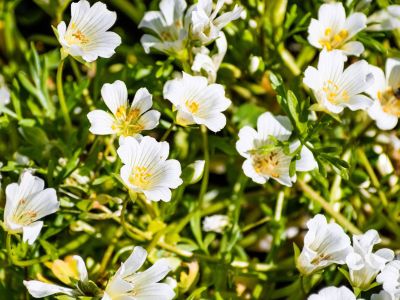Naturally occurring in many parts of the western United States, Limnanthes meadowfoam is just one example of a small plant that can make a big difference in the flower garden.
What is Meadowfoam?
Limnanthes meadowfoam, or meadowfoam for short, is an annual flowering plant which produces multitudes of small white and yellow flowers. These flowers are especially attractive to insects such as bees, butterflies, and hoverflies. Found growing in meadows and fields with consistently moist soils, meadowfoam has gained focus most recently for its potential use as a commercial oil crop. Through plant breeding, agriculturists have been able to develop cultivars of meadowfoam which are uniform and well-suited for crop production.
How to Grow Meadowfoam
Learning how to grow meadowfoam is relatively simple. When growing, gardeners will first need to locate seeds. Commercially bred meadowfoam seeds are not currently available to the public. However, home growers may be able to find seeds for the native wildflower variety online. Meadowfoam plant care should be relatively easy. Prepare a flower garden bed with loose, well-draining soil. Sow the seeds and gently cover them with soil. The seeds of the meadowfoam plant will remain dormant when temperatures are above 60 degrees F. (15 C.). This coincides with the plant’s preference to be grown throughout the coolest parts of the season. If winter conditions are too harsh for meadowfoam seeds to be sown in the fall, planting in spring is also an option for those with cool summer temperatures. After planting, make certain to irrigate consistently, as this can increase the production of flowers. Meadowfoam plants will generally begin to bloom early in the spring and continue into the early summer.
